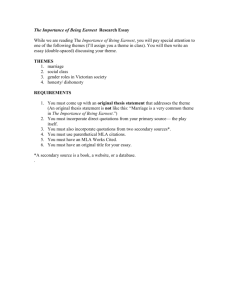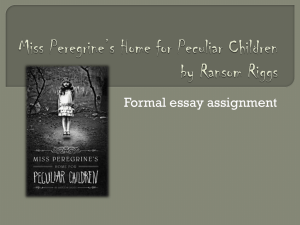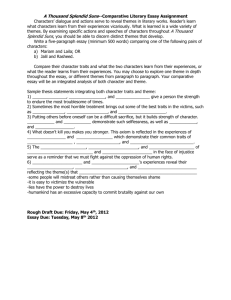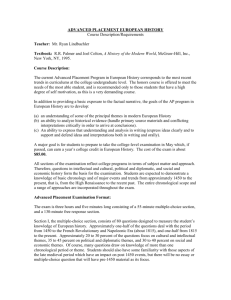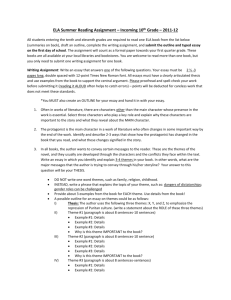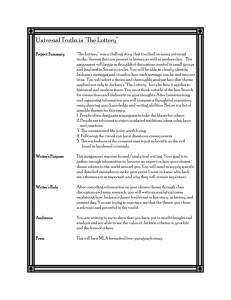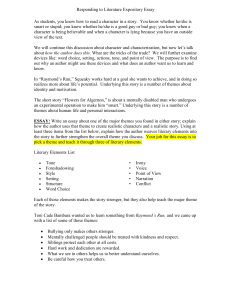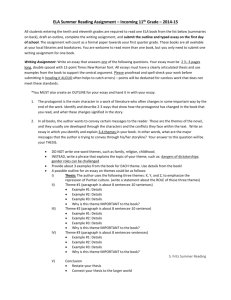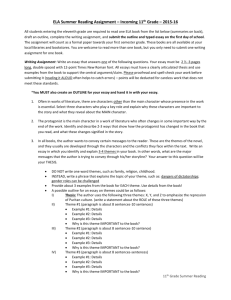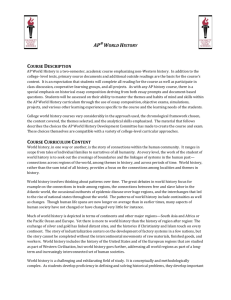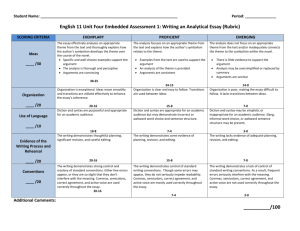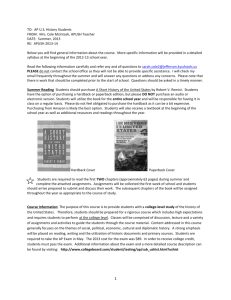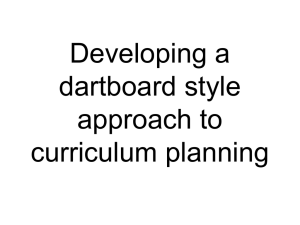A.P. World Intro PowerPoint
advertisement
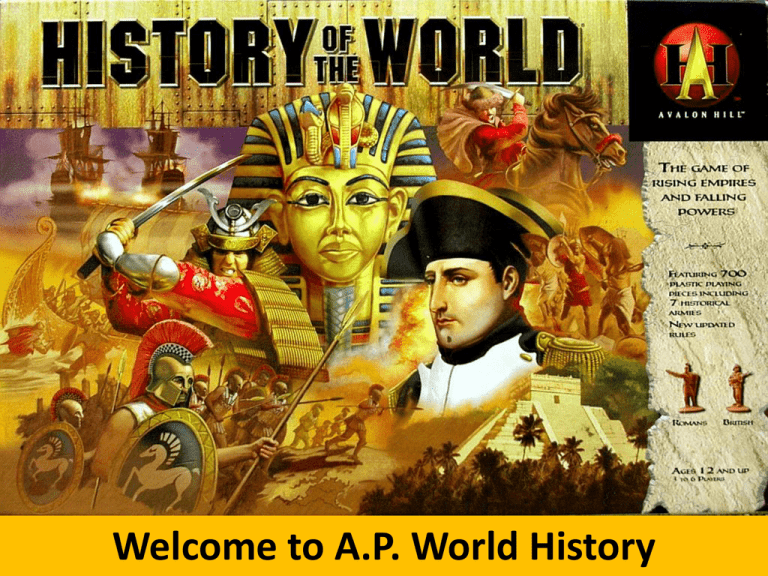
Welcome to A.P. World History Course Description • In A.P. World History we will explore key themes of world history, including interaction with the environment, cultures, state-building, economic systems, and social structures, from approximately 8000 B.C.E. to the present. The A.P. Exam • Exam is Thursday, May 15th • Graded on scale 1 to 5 • 3, 4, or 5 = college credit • 1,2 = no college credit The A.P. Exam Format Question Type Number of Questions Timing Multiple-choice 70 questions 55 minutes Document-based question 1 question 50 minutes Continuity and change-over time essay 1 question 40 minutes Comparative essay 1 question 40 minutes THE DBQ • 10 Documents • Must use all 10 • Must suggest a document that is not in the DBQ you feel would help • You must group the documents into 3 groups, based on their point of view or some similarity Continuity and Change Over Time Essay (CCOT) • No documents, this is a free response essay • Must analyze a change that occurs in a society over time • Example: Analyze continuities and changes in trade networks between Africa and Eurasia from circa 300 C.E. to 1450 C.E. Comparative Essay • No documents, this is a free response essay • Must compare 2 regions with each other at a specific point in time • Important you don’t summarize one, then the other. Need to constantly go back and forth • Example: Compare demographic and environmental effects of the Columbian Exchange on the Americas with the Columbian Exchange’s demographic and environmental effects on ONE of the following regions between 1492 and 1750. (Africa, Asia, or Europe) Periodization • If you were to write an autobiography at this point in your life, you may very well go chronologically How would you break up the chapters? • A.P. World History breaks history into 6 chapters, called periods Period Number Title Time Frame Period Weights Textbook Chapters Period 1 Technological and Environmental Transformations 8000 B.C.E – 600 B.C.E. 5% 1 Period 2 Organization and Reorganization of Human Societies 600 B.C.E. – 600 C.E. 15% 2-5 Period 3 Regional and Transregional Interactions 600 C.E. – 1450 20% 6-15 Period 4 Global Interactions 1450-1750 20% 16-22 Period 5 Industrialization and Global Integration 1750-1900 20% 23-27 Period 6 Accelerating Global Change and Realignments 1900Present 20% 28-36 Course Themes • As we study history, we must focus on 5 major themes for each unit we study • These themes are… Theme 1 - Environment Interactions between humans and the environment • Demography (population) and disease • Migration • Patterns of Settlement • Technology Theme 2 - Culture Development and interactions of cultures • Religions • Belief systems, philosophies, ideologies • Science and technology • Arts and architecture Theme 3 - Politics State building, expansion, and conflict • Forms of government • Empires • Nations and nationalism • Revolts and revolutions • Regional, transregional, and global structures and organizations Theme 4 – Economics Creation, expansion, and interaction of economic systems • Agriculture and pastoral production • Trade and commerce • Labor systems • Industrialization • Capitalism and socialism Theme 5 – Sociology Development and transformations of social structures • Gender roles and relations • Family and kinship • Racial and ethnic constructions • Social and economic classes P.E.C.E.S We’ll use term P.E.C.E.S. to remember the 5 themes • Politics • Environment • Culture • Economics • Sociology Important Info/Tips • Use my website (have to go to Salk site) • Keep up with course work and do reading/assignments • Read slow, take notes • Don’t be absent and actively participate in class
